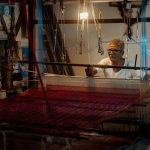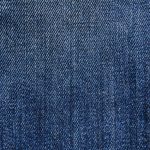You rely on aramid ballistic fabric to stop a bullet by turning the impact’s kinetic energy into strain and heat through its strong, tightly bonded fibers. Its unique molecular structure keeps fibers from breaking, spreading the force across layers to reduce penetration and blunt trauma. This lightweight fabric flexes while maintaining durability, offering reliable protection in gear like vests and helmets. To understand how this advanced material revolutionizes safety, keep exploring its remarkable design and uses.
Table of Contents
Key Takeaways
- Aramid fibers absorb bullet impact energy by stretching and converting kinetic energy into strain energy within the fabric.
- The strong hydrogen bonds between fibers distribute the load, preventing localized fiber breakage.
- Friction between fibers dissipates energy as heat, reducing the bullet’s velocity and penetration capability.
- Controlled fiber failure absorbs residual energy, slowing down and stopping the projectile effectively.
- The fabric’s crystalline molecular structure maintains integrity upon impact, preventing bullet penetration and blunt force trauma.
What Are Aramid Fibers?
Aramid fibers are strong, heat-resistant synthetic fibers used in ballistic fabrics. When you handle aramid fibers, you’ll notice their exceptional strength-to-weight ratio, which makes them ideal for protective gear.
These fibers are made from long chains of molecules linked by aromatic rings, giving them stability and resistance to heat and chemicals. You rely on their durability because they don’t melt or burn easily, even under extreme conditions.
Aramid fibers feature molecular chains linked by aromatic rings, ensuring heat and chemical resistance under extreme conditions.
Aramid fibers also resist stretching, so they maintain their shape and protective qualities when impacted. In ballistic fabrics, this means they can absorb and disperse the energy from bullets or shrapnel effectively.
When woven tightly, aramid fibers create a tough barrier that helps keep you safe without adding much bulk or weight.
The History and Development of Aramid Ballistic Fabrics
You’ve seen how these fibers offer impressive strength and heat resistance, but their journey into ballistic fabrics started decades ago.
Aramid fibers like Kevlar were first developed in the 1960s, revolutionizing protective gear. Here’s a quick look at their history:
- 1965 – DuPont invents Kevlar, introducing a lightweight, strong fiber.
- 1970s – Aramid fibers begin replacing steel in bulletproof vests for law enforcement.
- 1980s – Military adoption increases as aramid fabrics improve body armor performance.
- 1990s to now – Innovations enhance durability and comfort, expanding use in helmets and vehicle armor.
Molecular Structure and Strength Characteristics
The secret behind the exceptional strength of ballistic fabrics lies in their unique molecular structure. When you look closely, aramid fibers consist of long, rigid polymer chains aligned parallel to each other.
This alignment allows strong hydrogen bonds to form between chains, creating a tightly packed, crystalline structure. Because of this, the fibers resist stretching and breaking under stress.
You’ll find that these chains are composed of aromatic rings, which add stiffness and thermal stability, making the fabric both tough and heat-resistant.
This molecular arrangement gives aramid its high tensile strength and durability, enabling it to withstand extreme forces. When a bullet strikes, this strength prevents fibers from snapping easily, allowing the fabric to maintain integrity and protect you effectively.
How Aramid Fabrics Absorb and Disperse Energy
When a high-speed projectile hits the fabric, energy transfer happens almost instantly. You’ll see aramid fibers react by rapidly absorbing and dispersing this energy to prevent penetration.
Here’s how they do it:
- Fiber Stretching: The fibers elongate under impact, converting kinetic energy into strain energy.
- Friction Between Fibers: As fibers rub against each other, friction dissipates energy as heat.
- Load Distribution: Energy spreads across many fibers, reducing stress on any single point.
- Fiber Breakage and Delamination: Controlled fiber failure absorbs residual energy, further slowing the projectile.
The Role of Fabric Weave and Layering in Bullet Resistance
Although aramid fibers excel at energy absorption, how those fibers are woven and layered plays an essential part in stopping bullets.
You’ll find that the weave pattern affects the fabric’s flexibility and strength. A tighter weave creates a denser surface, helping to catch and slow down the bullet more effectively.
Meanwhile, layering multiple sheets of fabric spreads the impact across a wider area, reducing the force on any single point. When you combine these layers, the bullet’s energy dissipates through the fabric, preventing penetration.
Layering fabric distributes impact, reducing force per point and dissipating bullet energy to prevent penetration.
Proper alignment of layers also guarantees fibers don’t shift under impact, maintaining consistent protection.
Comparing Aramid to Other Ballistic Materials
Understanding how fabric weave and layering boost aramid’s bullet resistance sets the stage for comparing it with other ballistic materials.
When you evaluate options, consider these key points:
- Weight: Aramid fibers like Kevlar offer high strength at a lighter weight than steel or ceramic plates, making gear more comfortable.
- Flexibility: Unlike rigid ceramics, aramid fabrics flex, allowing better movement without sacrificing protection.
- Durability: Aramid resists moisture and UV damage better than polyethylene, ensuring longer-lasting performance.
- Cost: While more expensive than nylon, aramid is generally more affordable than advanced ceramics or ultra-high-molecular-weight polyethylene (UHMWPE).
Applications of Aramid Ballistic Fabrics in Personal Protection
Since aramid ballistic fabrics combine lightweight flexibility with high strength, they’ve become a top choice for personal protection gear.
When you wear body armor or a bulletproof vest made with aramid fibers, you get reliable protection without feeling weighed down. These fabrics absorb and disperse the energy from bullets, reducing penetration and blunt force trauma.
You’ll also find aramid in helmets, gloves, and even protective clothing for law enforcement and military personnel, enhancing safety without sacrificing mobility.
If you’re involved in security or high-risk activities, aramid ballistic fabric gear offers durability and comfort. It’s designed to withstand harsh conditions, so you can trust it to perform when it matters most, keeping you safer in dangerous situations.
Innovations and Future Trends in Aramid Ballistic Technology
As technology advances, aramid ballistic fabrics are evolving to meet new challenges in protection and performance.
You’ll see innovations that make these fabrics lighter, stronger, and more versatile.
Here’s what’s trending:
Emerging trends in aramid ballistic fabrics are reshaping protection with innovation and enhanced performance.
- Nano-enhanced fibers that boost strength without adding weight.
- Hybrid composites combining aramid with materials like graphene for superior impact resistance.
- Smart textiles embedded with sensors to monitor damage and wearer health in real time.
- Eco-friendly production methods reducing environmental impact while maintaining fabric quality.
Frequently Asked Questions
How Should Aramid Ballistic Fabric Be Maintained or Cleaned?
You should clean aramid ballistic fabric gently with mild soap and cold water, avoiding harsh chemicals or bleach. Don’t machine wash or dry it; instead, air dry it to maintain its protective properties and durability.
Can Aramid Ballistic Fabric Be Recycled or Reused?
You can recycle aramid ballistic fabric, but it’s challenging due to its tough fibers. Reusing it for less critical applications is more common. Make sure to handle it carefully to maintain its protective properties during reuse.
What Are the Environmental Impacts of Producing Aramid Fibers?
Ever wondered how producing aramid fibers affects the environment? You’ll find it consumes significant energy and releases pollutants. While durable, their manufacturing isn’t eco-friendly, so you should weigh benefits against environmental costs before choosing aramid materials.
Are There Any Health Risks Associated With Wearing Aramid Ballistic Fabric?
You won’t face major health risks wearing aramid ballistic fabric, but prolonged skin contact might cause irritation or allergies in some. Always check for sensitivity and guarantee proper garment fit to avoid discomfort or overheating.
How Does Temperature Affect the Performance of Aramid Ballistic Fabric?
Imagine wearing a leather jacket in a steam-powered train era; temperature shifts can weaken aramid fibers. You’ll notice reduced strength and flexibility in extreme heat or cold, which can compromise its protective performance against impacts.
- Can You Dye Gabardine Fabric? A DIY Guide and What to Expect - June 23, 2025
- Is Gabardine Good for Summer Wear? A Seasonal Fabric Analysis - June 23, 2025
- How to Care for a Wool Gabardine Garment at Home - June 23, 2025







